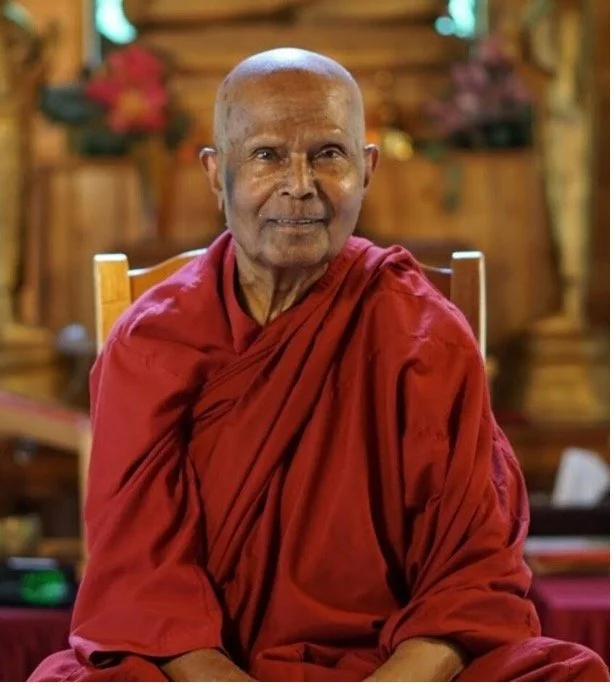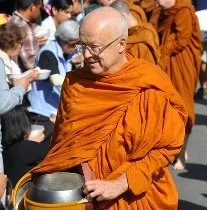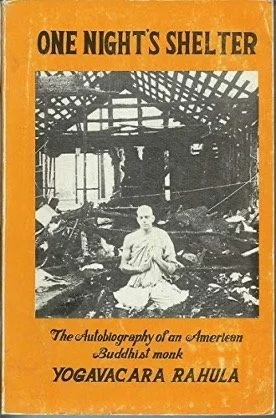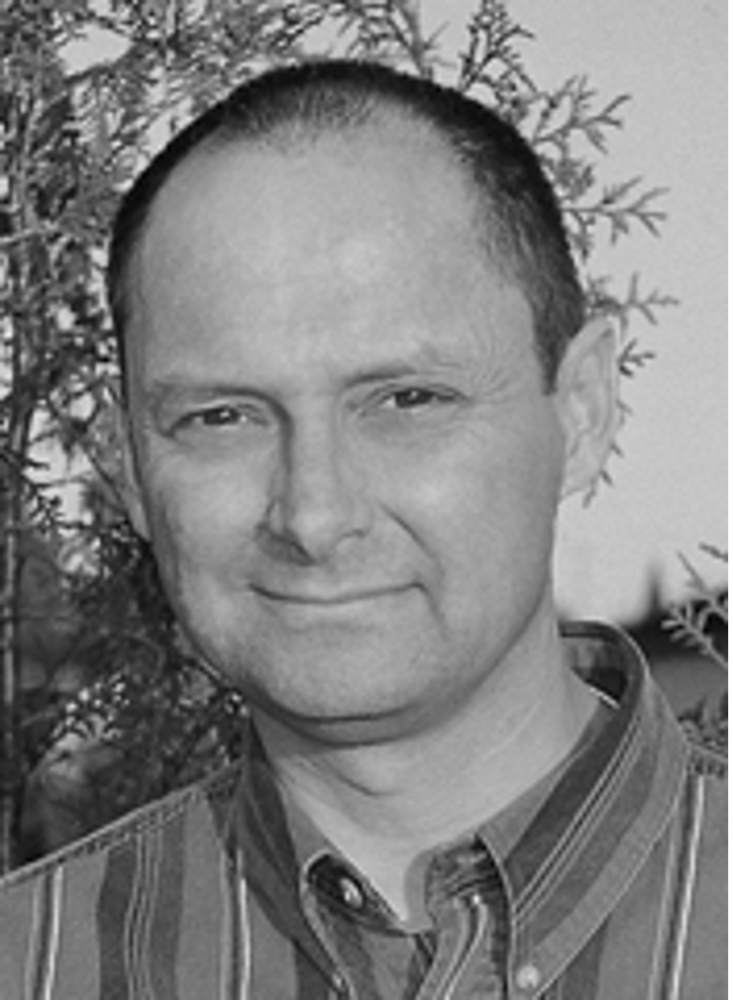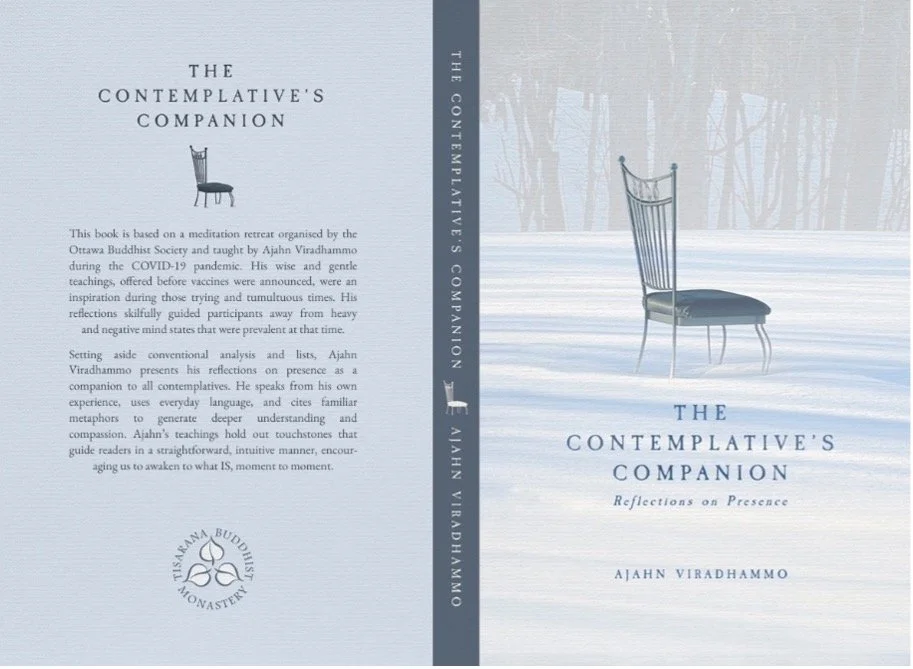Books
““The argument is made that Theravada does not posit a controlling will, but seeks to establish the possibility of changing attitudes, purposes, and acts through holistic methods of training. Theravada maintains that changes in attitude are possible because the mind has the “capacity to observe its own processes of conditioning, and is able to greatly diversify its responses to its own concepts and to factors in its environment.””
A Taste of Freedom – Ajahn Chah
This book is part of a set of 6 titles reprinted to commemorate the 100th birth anniversary of Ajahn Chah, made available for free distribution on 17th June 2018.
This collection of ten talks, given by Ajahn Chah in Thailand and England, was one of the earliest publications - 1991 - having been translated from the Thai language by the Sangha of Wat Pah Nanachat.
The Four Noble Truths – Ajahn Sumedho
A small booklet of edited talks given by Ajahn Sumedho on the central teaching of the Buddha: that the unhappiness of humanity can be overcome through spiritual means. Published in 2020.
Don’t Take Your Life Personally – Ajahn Sumedho
“Mindfulness or awareness is knowing, isn’t it? It is a direct knowing, immanent here and now. It is being fully present, attentive, to this present moment as is. But defining mindfulness tends to make it into something — and then it is no longer mindfulness, is it? Mindfulness is not a thing; it is a recognition, an intuitive awareness. It is awareness without grasping. With this recognition, we have perspective on the conditions that we experience in the present — our thoughts, identities, and the conditioning we have. Concentration, on the other hand, is usually on a form. We choose an object and then put our full attention onto it in contrast to mindfulness, which is formless and immeasurable, and does not seek a form. That is why describing mindfulness or awareness leads to the wrong attitude. Terms like ‘wake up’, ‘awakening’ or ‘pay attention’ are not definitions; they are suggestions to trust in this moment, to be present, to be here and now.”
Intuitive Awareness Ajahn Sumedho
Awareness is your refuge: Awareness of the changingness of feelings, of attitudes, of moods, of material and emotional change. Stay with that, because it’s a refuge that is indestructible. First published in 2004.
The Mindfulness in Plain English - Henepola Gunaratana
“The subject of this book is Vipassana meditation practice. Repeat, practice. This is a meditation manual, a nuts-and-bolts, step-by-step guide to Insight meditation. It is meant to be practical. It is meant for use.”
The Noble Eightfold Path – Bhikkhu Bodhi
“The search for a spiritual path is born out of suffering. It does not start with lights and ecstasy, but with the hard tacks of pain, disappointment, and confusion...”
Study Guides – Access to Insight Thanissaro Bhikkhu
Published: October 2017
THIS BOOK IS BASED UPON the talks and meditation instructions offered during a thirteen-day retreat at Amaravati in the summer of 2012. It is intended to be something of a follow-up to Finding the Missing Peace, which was published in 2011 and presented as ‘a primer of Buddhist meditation.’ The Breakthrough is intended to be a somewhat more specialized toolkit, describing the path of Buddhist meditation in an in-depth way, specifically highlighting the role of wisdom and reflective investigation in the development of insight and thereby psychological freedom.
Lotus in the Fire – Jim Bedard
In 1995, Jim Bedard, a martial artist and Zen student, was diagnosed with acute myeloid leukemia and given ten days to live. This is the story of how he used his spiritual strength to bring himself into full contact with a death sentence as well as with painful medical treatment, including chemotherapy and a bone marrow transplant. It is also the inspiring story of how the faith of his family, Zen teacher, close friends, and the Buddhist community helped him.
Bedard's story introduces us to Zen practices that can help us cope with emotional turmoil and physical pain. His words on compassion, on karma, on gratitude, on impermanence and the inevitability of death—all from a nonsmoking, meditating, aerobically fit vegetarian who became suddenly and "terminally" ill—are inspiring and sometimes funny. He explores, too, the fundamental question of suffering, its cause, and how the teachings of karma can help us accept illness, ultimately using it as an opportunity to deepen our spiritual lives.
The Contemplative’s Craft – Ajahn Viradhammo
“An essay by a friend entitled “The Face of Wonder” had me contemplating wonder and its significance in life. I started to reflect on the time when I was walking near my mother’s home in Ottawa and suddenly saw a dozen pigeons sitting on a telephone line. The sky that day was very clear, very sunny, and very blue. The pigeons were all puffed up to stay warm—it’s quite clever the way birds do that. So there was this lovely image of a row of puffy pigeons perched against this deep blue background. Ah! It was one of those moments when a sense of wonder arises. The mind stops, and there’s just this. There’s only the way things are, just as they are in that moment without any analysis or mental comment. I like to think of this as “connection.”
The Contemplative’s Companion – Ajahn Viradhammo
“The Contemplative’s Companion is both a record and a guide of this virtual meditation retreat held during the first wave of the COVID-19 pandemic. At that time, Ajahn Viradhammo and the organisers from the Ottawa Buddhist Society aimed to create a new virtual retreat community with solitary practitioners living everywhere in pandemic isolation. [...]
Another thing to keep in mind as you go through this book, or the audio recordings that are available as a playlist on Tisarana Buddhist Monastery's YouTube channel, is that the teachings offered by the Forest Sangha teachers, such as Ajahn Viradhammo, are spoken contemporaneously without notes. In that way, the talks are a response to the needs of the time and listeners. But, as you’ll discover, the themes are universal because the very nature of Dhamma is akāliko (timeless)."
Being Nobody, Going Nowhere: Meditations on the Buddhist Path
“This is a simple book for ordinary people who want to find greater happiness and contentment in their lives by following a spiritual path. The Buddha’s path is simple and meant for ordinary people, and anyone with goodwill and determination can follow its steps towards freedom of heart and mind. Both heart and mind have to be involved in this journey towards liberation from the ‘self.’ The mind understands and concludes, connects and discerns, whereas the heart feels.”



